There are vegetables and fruits that begin with X!
Now, X isn't exactly the life of the (alphabet) party, so don’t expect this list to be as long as Fruits that start with T, Vegetables that start with B, and Fruits that start with M. But I tried my best…and guess what?
X-traordinary produce items that are not only incredibly tasty but also pack a nutritional punch (well, except the last one). So, let’s go ahead and talk about them! 🥕
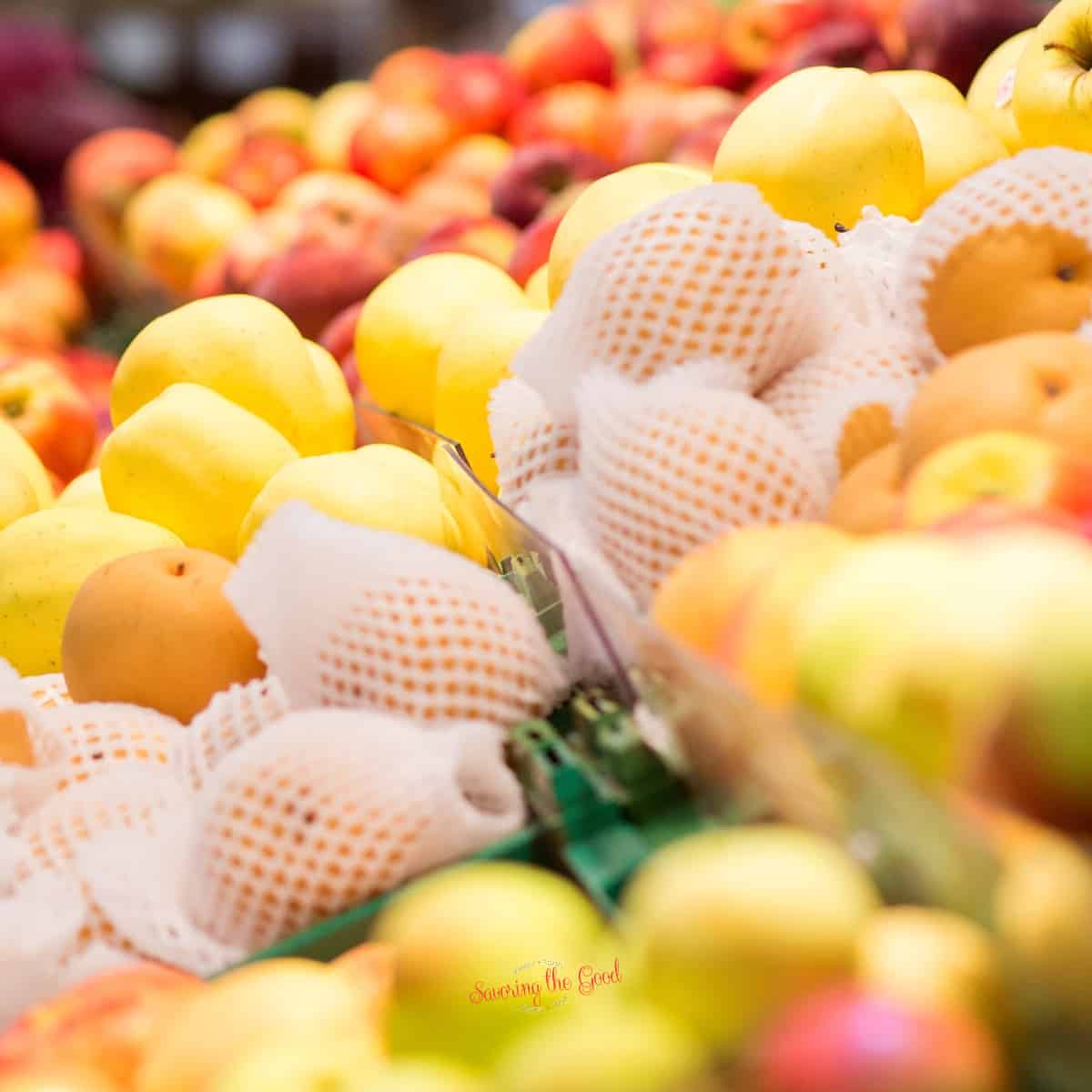
Fruits and Vegetables That Begin With X 🍉
Many of the fruits on this list, if not all, you probably haven't seen yet, but that’s exactly what makes talking about them all the more x-citing!
Do you have a favorite X fruit or veggie, and did it make the list?
🥬 Vegetables Beginning in Letter X
1. Xi Lan Hua

Let's kick things off with one of my all-time favorite vegetables to cook: Xi Lan Hua, or simply...broccoli.
There are many ways to cook Xi Lan Hua. Blanching? Boiling? Steaming? No problem! You can even use them to make a filling Amish Broccoli Salad or Broccoli Rice Casserole if you happen to have excess rice.
You can also roast or sauté them for a healthy Asian Broccoli Keto. So versatile!
2. Xà Lách
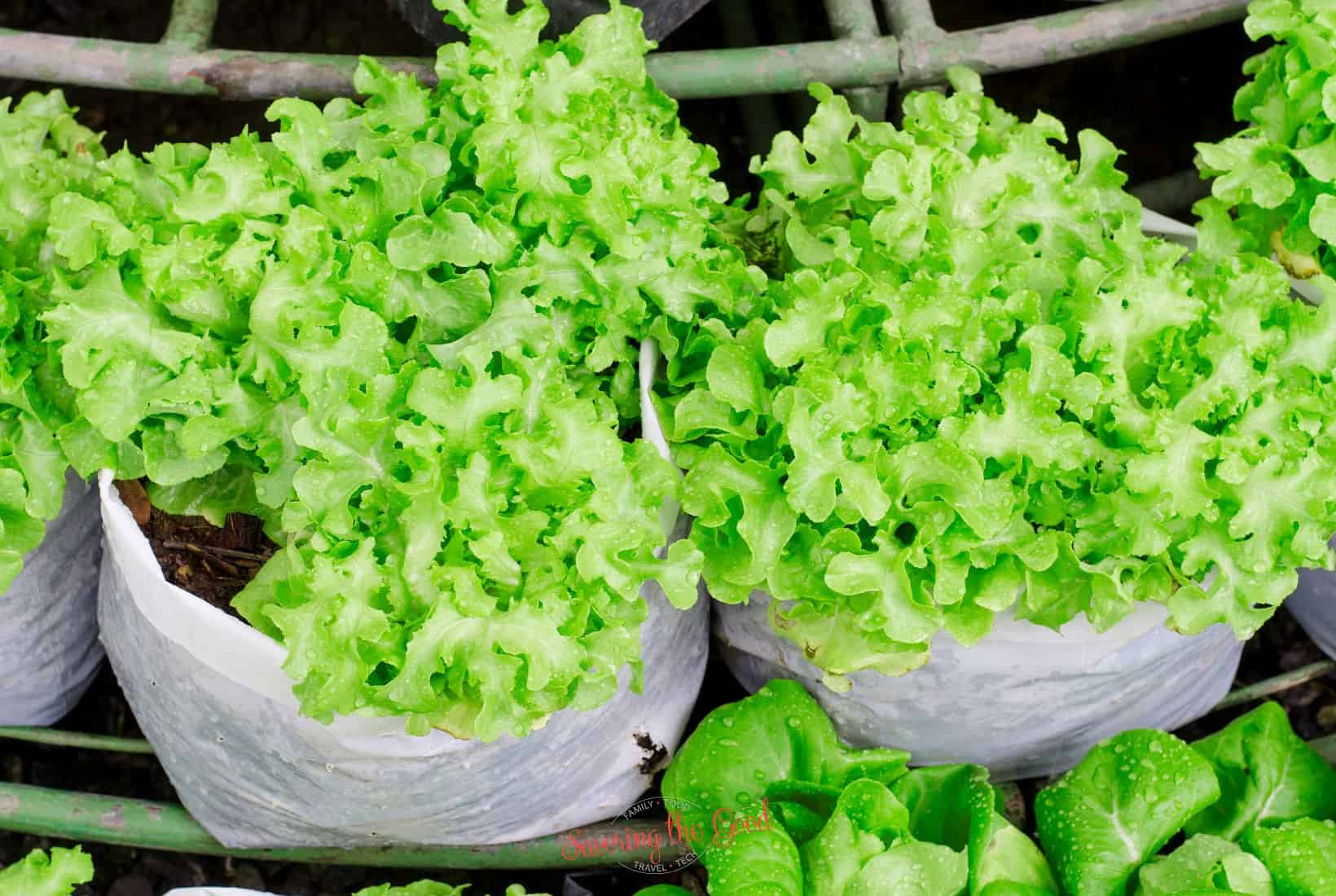
Another veggie known for its nutrients and versatility is the Xà Lách.
Also known as lettuce, Xà Lách, it’s more than a mere ingredient. It’s a superstar in its own right, offering a gentle, slightly sweet taste and firm, crunchy texture that can elevate virtually any type of meal—salads, soups, sandwiches, wraps...I can go on and on!
3. Xi Yang Cai

Watercress, with its delicate stems and leaves, is often used as a simple garnish. But let me tell you, there's more to it than just a dash of peppery flavor!
When it comes to nutrition, this little leafy wonder has A LOT to offer—potassium, beta-carotene, thiamin, iron, calcium, folate, vitamin B6, vitamin E, vitamin C, and oh so many more.
To make the most of its nutritional benefits, go ahead and enjoy it fresh and raw. Your taste buds and body will thank you!
4. Xanthosoma Brasiliense
Xanthosoma Brasiliense is the scientific name for Tahitian spinach. It’s an edible plant that was first cultivated in the Amazon region but is now grown in many tropical areas in the world.
Cook its leaves and stems thoroughly (!) and you’ll get a surprisingly tasty sauce like Knorr Spinach Dip and Artichoke Spinach Dip.
Emphasis on thoroughly because unlike the regular spinach, this variety contains a lot of calcium oxalate crystals, which can cause irritation and discomfort if consumed (or even touched) uncooked.
5. Xanthosoma Caracu
Let's talk about another xanthosoma gem: the Xanthosoma Caracu.
Like Xanthosoma Brasiliense, it has toxins that require proper cooking before consumption, but unlike it, Xanthosoma Caracu is not a type of spinach.
Instead it’s an edible tropical plant that produces edible tubers and leaves, perfect for all sorts of grilled, fried, and baked dishes.
You can even dry and grind the roots into flour to use as a thickening agent in soups and puddings!
6. Xanthosoma Sagittifolium
We can’t talk about Xanthosoma Brasiliense and Xanthosoma Caracu without touching on one of the most well-known xanthosoma plants: Xanthosoma Sagittifolium!
It’s not so different from Xanthosoma Caracu because its roots and leaves can also be used in many culinary applications.
For example, in Puerto Rico, the roots are used to create a fritters dish called alcapurrias. And in the Netherlands, they’re shredded and cooked with fruit juices, chicken, spices, and salted meat.
🍌 Fruits Starting With X
7. Xerophyte Fruit

Now, moving on to fruits, we have the spiky Xerophytes!
Xerophyte is a type of plant that can adapt to survive and thrive in arid or desert-like environments. Sound familiar? You got it, cacti fall under this category, as do pineapples and some gymnosperm plants.
And fun fact: the Xerophyte “fruit” we’re talking about can be fruits or vegetables.
Why? Well, that’s because not every edible part of a Xerophyte qualifies as a fruit.
Take nopales plants, for instance—its long, flat, edible leaves are found on many farmers’ markets and grocery stores and consumed as a dietary vegetable.
8. Xoconostle
Since we're already on the topic of cacti and nopales, let’s not go very far and talk about Xoconostle. This fruit, a sour prickly pear variety, grows at the tip of nopales and features a pale green skin with pale peach or pink flesh.
Its sour taste makes it a great addition to salsas and sauces, like the traditional mole sauce (Mole de Olla) in Mexico.
You can even use it for purees and roasting, simply remove the peel and cook the smooth, creamy flesh in a pan, on a grill, or using whatever kitchen tools you have!
9. Xigua

There's no better way to beat the heat than by enjoying a sip of a fresh summer drink.
And if I have to choose the best fruit for juices and smoothies, it would be Xigua (another name for the common watermelon), hands down! If you haven't tried making Watermelon Juice yet, now's the time!
Not only is it incredibly refreshing, but it's also loaded with vitamins and minerals. Rich in vitamins A and C, watermelon supports healthy skin, boosts the immune system, and aids in collagen production.
The presence of lycopene also reduces the risk of chronic diseases and helps protect cells from different types of damage!
10. Xiangjiao

Another refreshing fruit that’s perfect for smoothies (and cheesecake bars!) is Xiangjiao or banana!
Like many banana varieties, the fruit is yellow, curved, and elongated, and the flesh is creamy and pale yellow to vibrant golden in color (depending on the ripeness).
As a fruit native to China, Xiangjiao has been integrated into various aspects of Chinese life. It's not just used in traditional Chinese cooking, but it also appears in ancient literature, art, and even has a role in traditional medicine.
11. Xoài

When discussing summer favorites, mangoes (or "Xoài" in Vietnamese) simply cannot be left out.
As soon as the summer season arrives, I always make sure to grab some juicy and plump mangoes from the farmers' markets, and my go-to treat? Mangonada!
It's wonderfully tasty and so easy to make, I love making them for gatherings by the pool or picnics in the yard. If you can't find fresh mangoes, don't worry—you can use frozen ones!
If it’s your first time preparing mangoes, check out my simple tutorial on how to peel them.
12. Xoay
If you need tamarind to spruce up your sauces, chutneys, marinades, drinks, and even desserts, look no further than Xoay! Here are 20 Best Ways to Use Them.
Not only are they versatile, they're incredibly good for the body too. Don't let the size fool you. Yes, the fruit is small, but boy are they jam-packed with essential antioxidants!
13. Ximenia Caffra Fruit
There’s a particular fruit that Chinese fruit growers look forward to during the month of March: the Ximenia Caffra fruit (or sour plum). That is because they're only around for about a month!
Once they ripen from orange to red, it's go-time for Chinese harvesters to start picking them. They give the pulp a good squeeze to whip up suanmeitang—a sour flavored drink that's ironically mixed with an equal amount of sugar.
14. Ximenia Americana
Ximenia Americana, or simply sea lemon / hog plum, is a fruit native to the tropical regions of the Americas and is commonly found in Central and South America, the Caribbean, and certain parts of Africa.
It’s typically oval or oblong in shape, with a smooth and thin skin that ranges in color from green to yellow when ripe.
I have yet to try this one, but I heard it tastes quite similar to Granny Smith apples! Sweet, sour, and just a little bit tangy.
15. Xinomavro Grape
If you're into wines, you might have come across Xinomavro Grapes. It's one of Greece's top wine grapes, along with Moschofilero, Assyrtiko, and Agiorgitiko, and is a highly esteemed red variety from the vineyards of Northern Greece.
Fun fact: Xinomavro got its name from xino (“sour”) and mavro (“black), which perfectly reflects its characteristics—high acidity and dark skin.
Swap out your regular champagne for Xinomavro wine and treat yourself to a Sugared Prosecco Grapes appetizer for a late-night party to remember!
16. Xarel-lo
Moving from Greece's vineyards, our next stop is Catalonia, Spain where we’ll find a species of grape that’s medium in size and has a thick skin that retains acidity: the Xarel-lo.
When you uncork a bottle of Xarel-lo sparkling wine, you'll be met with a symphony of shy, austere aroma and citrusy and slightly bitter notes that evoke the essence of the Spanish countryside.
Pair it with any of these 22 Easy Spanish Appetizers for the ultimate Spanish experience. Delicioso!
17. Xylocarp Fruit (Xylocarpus Granatum)
Xylocarp fruit has many names: cannonball mangrove, cedar mangrove, puzzlenut tree. But what it really is is a tropical fruit with a hard woody pericarp…coconuts basically.
But unlike regular coconuts, the Xylocarpus Granatum tree has a bushier and denser look and grows in saline, brackish waters in Australia, Pacific Islands, Asia, and Africa.
The fruit also splits open once it ripens and falls off the tree, unlike the tougher-to-crack coconuts.
18. Xing Zi

Whether eaten raw or added into jellies, pies, and jams, Xing Zi or apricots are a total crowd-pleaser.
With their distinct sweet, tart flavor and soft yet slightly firm texture, they’re perfect for summer picnics, dessert tables, brunch gatherings, or any occasion, really!
Check out this article to learn how to pick the yummiest, juiciest apricot in your local store.
19. Xanthium Fruit
Wrapping up, we've got the most, well, dangerous X fruit in this lineup: the Xanthium.
Dangerous because it’s covered in a whole bunch of spikes (like a small hedgehog) and it can really irritate your skin. Plus, it’s definitely not for eating.
That’s right, not all fruits are edible. In fact, there's quite a bunch of them: Alpine honeysuckle, asparagus berries, coyote melon, and so many more.
🍱 More Recipes To Explore
Breakfast Recipes
- 20 Traditional Greek Breakfast Food Ideas
- Strawberry Pancakes 🍓
- 35 Popular Scottish Breakfast Foods 🏴
📖 Recipe
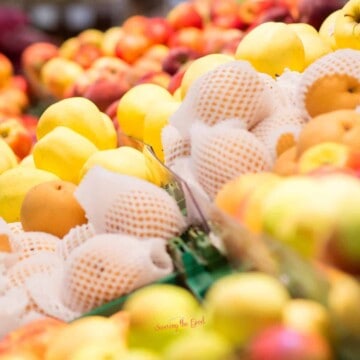
Fruits and Vegetables That Begin With X
There is more to a recipe than just the recipe card. Frequently Asked Questions within the blog post that you may find helpful. Simply scroll back up to read them!
Ingredients
- Xi Lan Hua
- Xà Lách
- Xi Yang Cai
- Xanthosoma Brasiliense
- Xanthosoma Caracu
- Xanthosoma Sagittifolium
- Xerophyte Fruit
- Xoconostle
- Xigua
- Xiangjiao
- Xoài
- Xoay
- Ximenia Caffra Fruit
- Ximenia Americana
- Xinomavro Grape
- Xarel-lo
- Xylocarp Fruit (Xylocarpus Granatum)
- Xing Zi
- Xanthium Fruit
Instructions
- Choose your favorite fruit or vegetable.
- Wash your fruit or vegetable.
- Prepare your fruit or vegetable according to your desired recipe.
Nutrition Disclosure
Nutritional facts are estimates and are provided as a courtesy to the reader. Please utilize your own brand nutritional values to double check against our estimates. Nutritional values are calculated via a third party. Changing ingredients, amounts or cooking technique will alter the estimated nutritional calculations.

👩🏻🍳 Sarah Mock
CEO/Owner/Founder/Culinary Blogger
Sarah Mock is a classically trained Chef and graduate of Johnson & Wales University. A culinary blogger for 14 years Sarah helps the home cook prepare her recipes with professional results.




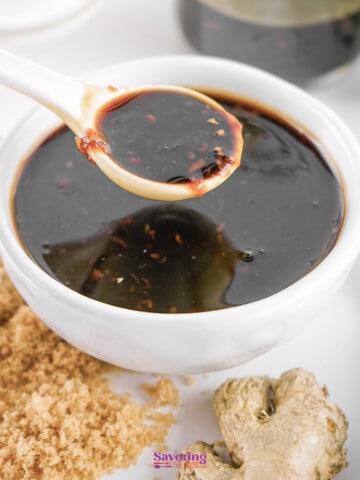


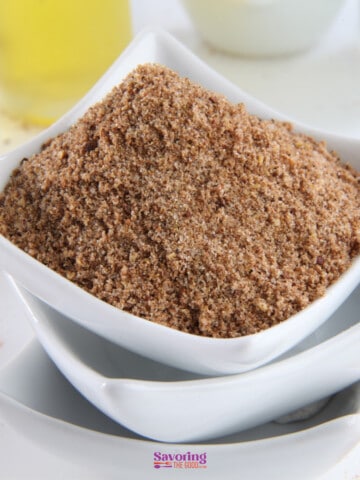
Comments
No Comments